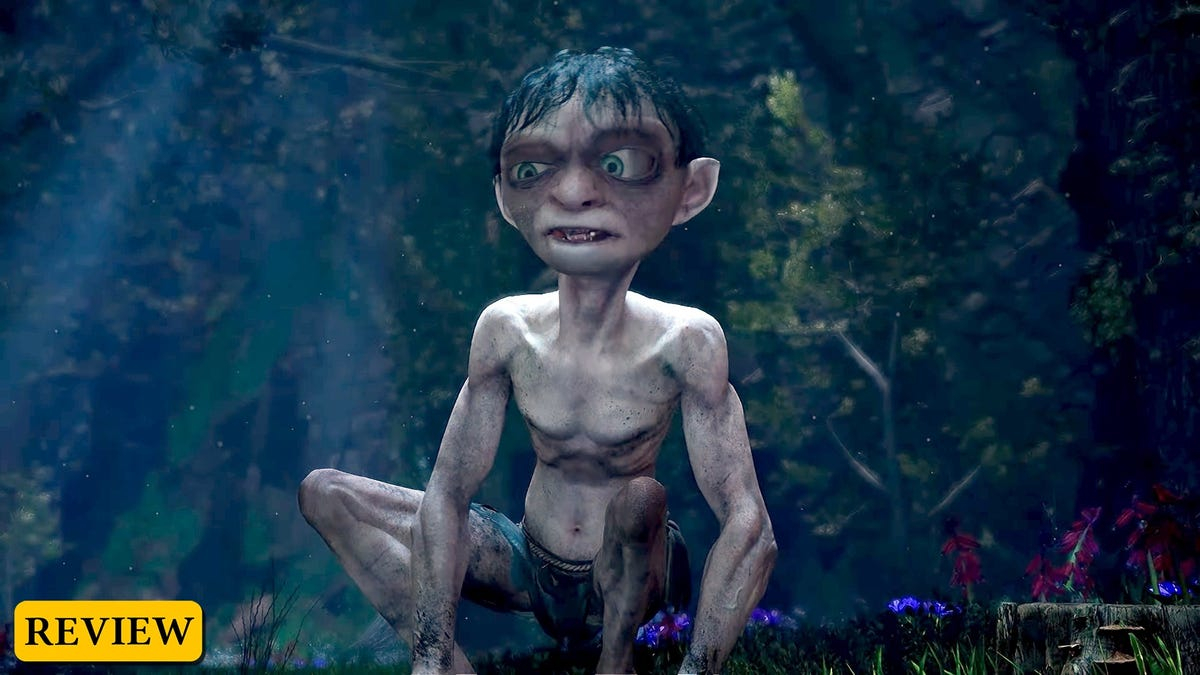The Struggles of Gollum: A Journey Through Shadows
After navigating through hordes of orcs and evading menacing spiders, I stumbled upon the lair of Shelob. In The Lord of the Rings: Gollum, I found myself trapped in servitude, completing menial tasks like gathering tags and herding creatures for a meager morsel of stale bread. My desire for freedom was palpable. Encountering Shelob felt like my first genuine opportunity to negotiate my release. In a moment of desperation, I offered her a freshly captured slave, hoping that this act would evoke some semblance of empathy from the fearsome spider queen. Unfortunately, my expectations were dashed when a cutscene activated; before I could even brace myself for her pursuit, Shelob ensnared me in her grasp—making me both prey to Tolkien’s terrifying arachnid and victim to one of the game’s numerous glitches. I experienced death twice: once within the game itself and again in reality as laughter erupted from my disbelief.
The Dichotomy Between Gameplay and Narrative
This dissonance between cinematic sequences and actual gameplay encapsulates Gollum, an adventure narrative centered on the twisted journey of its titular character prior to The Fellowship of the Ring. It is insufficient to label this game as merely flawed; it embodies a deeper struggle akin to J.R.R. Tolkien’s own creation—a tragic figure caught between light and darkness. While thematically rich, it suffers from significant mechanical shortcomings that undermine its potential.
Set against the backdrop between Tolkien’s 1937 novel The Hobbit and his epic saga The Lord of the Rings, Gollum’s story unfolds through ten episodic vignettes drawn out by Gandalf during an unusual therapy session within Mirkwood’s confines. As players guide Gollum across Middle-earth in search for his precious Ring, they encounter familiar faces such as Thranduil (Legolas’ father) alongside new characters not found in canonical lore.
Navigating Middle-earth: Stealth Over Action
Players will traverse iconic locations like Barad-dûr’s shadowy fortress or Cirith Ungol’s treacherous mountain paths while engaging in repetitive tasks aimed at securing their escape routes. Although marketed as a stealth-action title, it leans heavily towards stealth mechanics rather than action-oriented gameplay—often resulting in instant failures if detected by enemies during critical sections or platforming challenges.
While there are moments where Gollum can eliminate unsuspecting foes when undetected—provided they aren’t wearing helmets—the inconsistency becomes glaringly apparent when cutscenes contradict established rules regarding enemy interactions.
Frustrations with Controls
Controlling Gollum feels akin to maneuvering on ice; he possesses weight yet lacks control over his momentum—a frustrating combination given that precision is paramount during platforming segments where missteps can lead directly to death. His climbing prowess should be impressive but often feels erratic; sometimes he clings effortlessly onto ledges while other times he plummets unexpectedly due to unresponsive controls or missed button presses.
I occasionally entered into an exhilarating rhythm while scaling walls adorned with vines only for him suddenly let go mid-climb—plummeting into oblivion without warning—or sliding off edges after lengthy sequences spent solving environmental puzzles only to repeat tedious sections due solely because he couldn’t halt his descent properly.
Bugs Galore: A Game-Changing Issue
As if controlling him wasn’t challenging enough already! The game is riddled with bugs—both literal insects that serve as healing items within gameplay mechanics—and technical glitches that disrupt immersion entirely. Instances abound where deaths occur immediately following cutscenes or bizarre scenarios arise such as falling through platforms just landed upon or getting stuck mid-animation leading inevitably toward demise.
Despite having checkpoints designed for leniency (typically resetting players five minutes back), these mechanical frustrations often sap motivation away from continuing amidst overwhelming tedium—a sentiment echoed among friends who’ve humorously noted how many more times I’ve met my end here compared with notoriously difficult titles like Elden Ring.
Themes Worth Exploring Yet Unfulfilled Potential
At its core lies an exploration into duality—the internal conflict faced by Gollum/Sméagol represents humanity’s struggle against obsession leading us astray morally speaking—a theme ripe with potential yet ultimately squandered throughout gameplay choices presented therein which lack real consequence despite appearing impactful initially (e.g., deciding whether or not kill harmless beetles).
While moments exist showcasing Sméagol’s compassion beneath layers grime surrounding him—they’re overshadowed by cumbersome mechanics rendering thematic depth nearly invisible amidst frustration stemming primarily from poor execution overall leaving players yearning instead for something more substantial than mere illusionary choices devoid meaning behind them altogether!
In conclusion? This title embodies contradictions galore—it strives toward being precision-focused yet falters under imprecision; aims at stealth but delivers uninspired AI encounters lacking challenge altogether—all compounded further still via persistent bugs undermining experience entirely! There exists untapped promise buried deep within Daedalic Entertainment’s offering—but alas! What remains visible today resembles nothing short early-2000s 3D platformers gone awry placing it firmly amongst contenders vying claim title “worst game” released thus far this year!
